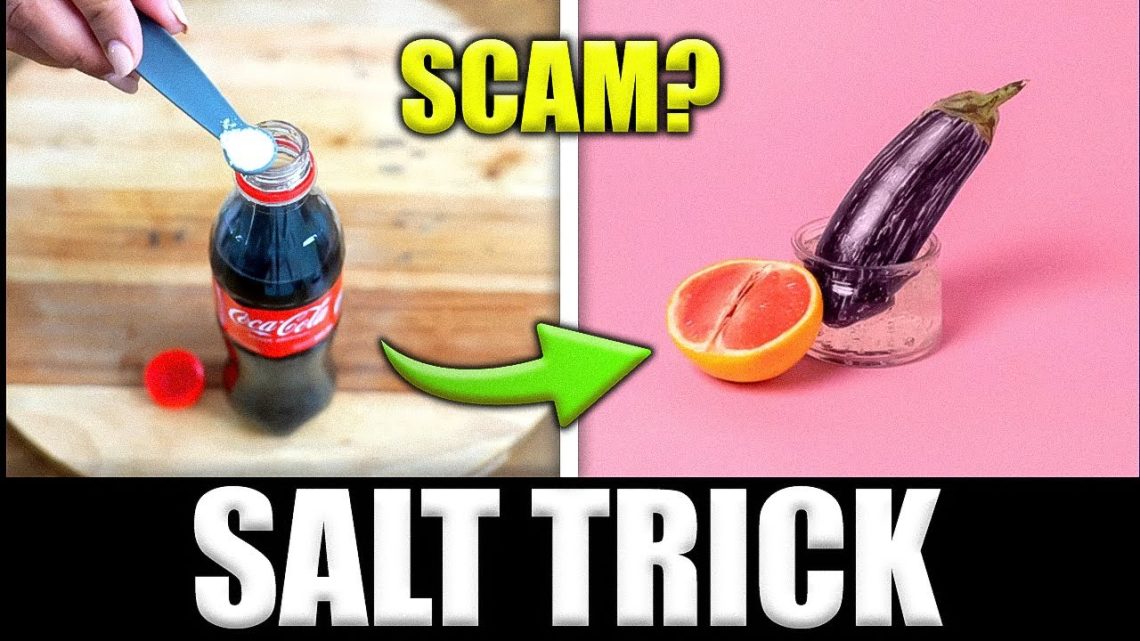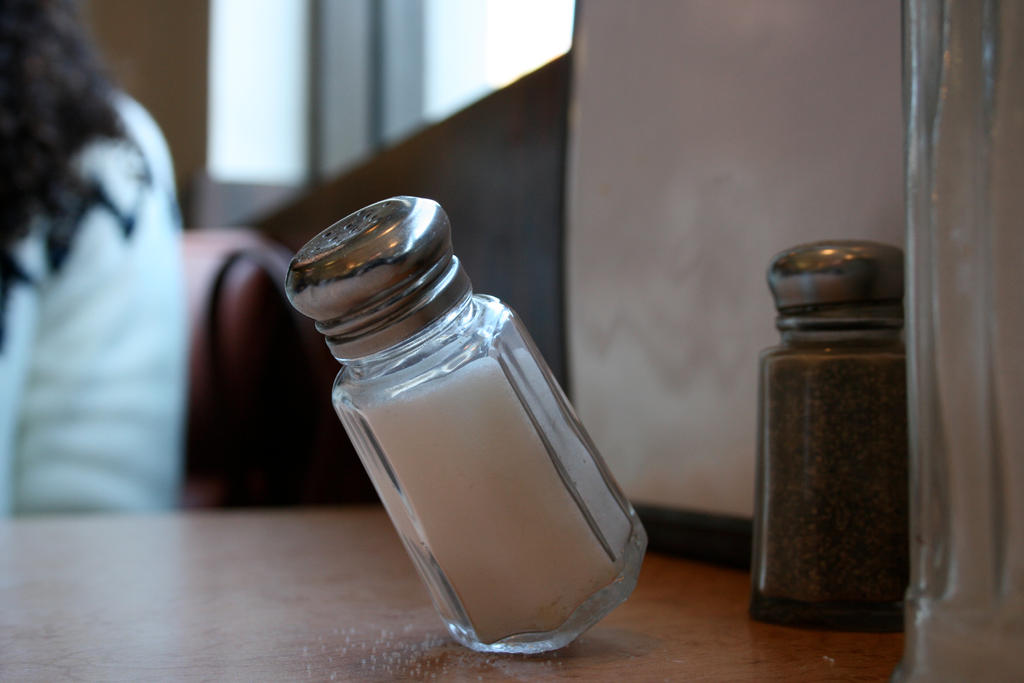Have you ever wondered how the salt trick works? This seemingly simple yet fascinating phenomenon has intrigued scientists, chefs, and everyday individuals alike. The salt trick involves using salt to enhance flavors, remove impurities, and even perform household tasks. But what exactly makes it so effective? In this article, we will delve into the science behind the salt trick, exploring its applications, benefits, and limitations.
From culinary arts to household cleaning, the salt trick has proven to be an indispensable tool. Whether you're looking to enhance the taste of your food or remove stubborn stains, salt can be your go-to solution. But understanding how it works is essential to maximizing its potential.
In this article, we will explore the science behind the salt trick, its various applications, and how you can incorporate it into your daily life. By the end of this guide, you'll have a comprehensive understanding of why salt is such a powerful and versatile tool.
Table of Contents
- What Is the Salt Trick?
- The Science Behind the Salt Trick
- Culinary Applications of the Salt Trick
- Household Uses of the Salt Trick
- Health Implications of Using Salt
- Types of Salt and Their Uses
- How to Use the Salt Trick Effectively
- Common Misconceptions About the Salt Trick
- Environmental Impact of Salt Usage
- Conclusion
What Is the Salt Trick?
The salt trick refers to the use of salt in various contexts to achieve specific outcomes. Whether it's enhancing the flavor of food, removing stains, or de-icing roads, the versatility of salt is undeniable. The trick lies in understanding how salt interacts with its environment and how it can be utilized effectively.
Historically, salt has been used for centuries as a preservative, seasoning, and cleaning agent. Its ability to draw out moisture, neutralize odors, and improve taste makes it an invaluable resource in both the kitchen and the home.
In modern times, the salt trick has evolved to include a wide range of applications, from cosmetic uses to industrial processes. Understanding its mechanisms and limitations is crucial for maximizing its benefits.
The Science Behind the Salt Trick
How Salt Works on a Molecular Level
Salt, or sodium chloride, is composed of sodium and chloride ions. When dissolved in water, these ions separate, creating an electrolyte solution that interacts with other substances. This process is key to understanding how the salt trick works.
For example, in cooking, salt enhances flavors by drawing out moisture from food, concentrating its natural flavors. In cleaning, salt acts as an abrasive and neutralizes odors by breaking down organic compounds.
Research from the National Institutes of Health highlights the importance of electrolytes in biological processes, further emphasizing the role of salt in maintaining balance and functionality.
Culinary Applications of the Salt Trick
Enhancing Flavor in Cooking
In the culinary world, the salt trick is indispensable. Chefs use salt to enhance the natural flavors of food, balance acidity, and improve texture. Here are some ways salt is used in cooking:
- Seasoning meats and vegetables to bring out their natural flavors.
- Brining to tenderize and add moisture to proteins.
- Salting pasta water to enhance the taste of the dish.
Studies from the Journal of Food Science demonstrate that salt not only enhances flavor but also improves the overall eating experience by activating taste receptors.
Household Uses of the Salt Trick
Cleaning and Maintenance
Beyond the kitchen, the salt trick is a powerful tool for household cleaning and maintenance. Here are some practical applications:
- Removing stains from carpets and fabrics.
- De-icing driveways and sidewalks during winter.
- Polishing silverware and cleaning pots and pans.
According to the Environmental Protection Agency, using salt for cleaning is a safe and effective alternative to harsh chemicals, making it an eco-friendly option for many households.
Health Implications of Using Salt
Balancing Sodium Intake
While the salt trick offers numerous benefits, it's important to consider its health implications. Excessive sodium intake can lead to health issues such as hypertension, heart disease, and kidney problems. However, moderate use of salt is essential for maintaining electrolyte balance and supporting bodily functions.
The World Health Organization recommends limiting daily sodium intake to less than 5 grams, emphasizing the importance of moderation in dietary habits.
Types of Salt and Their Uses
Exploring Different Kinds of Salt
Not all salts are created equal. Different types of salt have unique properties that make them suitable for specific uses. Here are some common types of salt and their applications:
- Table Salt: Refined and iodized, ideal for everyday cooking.
- Kosher Salt: Coarser texture, perfect for seasoning meats.
- Sea Salt: Harvested from evaporated seawater, adds a distinct flavor to dishes.
- Himalayan Pink Salt: Contains trace minerals, often used for aesthetic and health purposes.
Understanding the differences between these salts can help you choose the right one for your needs.
How to Use the Salt Trick Effectively
Tips for Maximizing Results
To get the most out of the salt trick, follow these tips:
- Measure the amount of salt you use to avoid over-salting.
- Experiment with different types of salt for varied results.
- Combine salt with other ingredients for enhanced effects, such as vinegar for cleaning or herbs for cooking.
By using salt thoughtfully and strategically, you can achieve better results in both cooking and cleaning.
Common Misconceptions About the Salt Trick
Separating Fact from Fiction
There are several misconceptions surrounding the salt trick. Here are a few common ones:
- Salt is Only for Flavor: While salt enhances flavor, it also serves as a preservative, cleaning agent, and more.
- All Salt is the Same: Different types of salt have distinct properties and uses, making them suitable for various applications.
- Salt is Always Harmful: Moderate use of salt is essential for maintaining health and well-being.
By dispelling these myths, you can better understand the true potential of the salt trick.
Environmental Impact of Salt Usage
Sustainable Practices
The widespread use of salt, particularly for de-icing roads, has raised concerns about its environmental impact. Excessive salt runoff can harm aquatic ecosystems and contaminate groundwater. To mitigate these effects, sustainable practices such as using alternative de-icers and reducing salt usage are being explored.
The United Nations Environment Programme advocates for responsible salt management to protect natural resources and promote environmental sustainability.
Conclusion
In conclusion, the salt trick is a versatile and powerful tool with applications in cooking, cleaning, and beyond. By understanding its science, applications, and limitations, you can harness its potential to improve your daily life. Whether you're enhancing the flavor of your meals or tackling household chores, salt remains an invaluable resource.
We invite you to share your thoughts and experiences with the salt trick in the comments below. Have you discovered any unique uses for salt? Let us know! And don't forget to explore our other articles for more insightful content.


